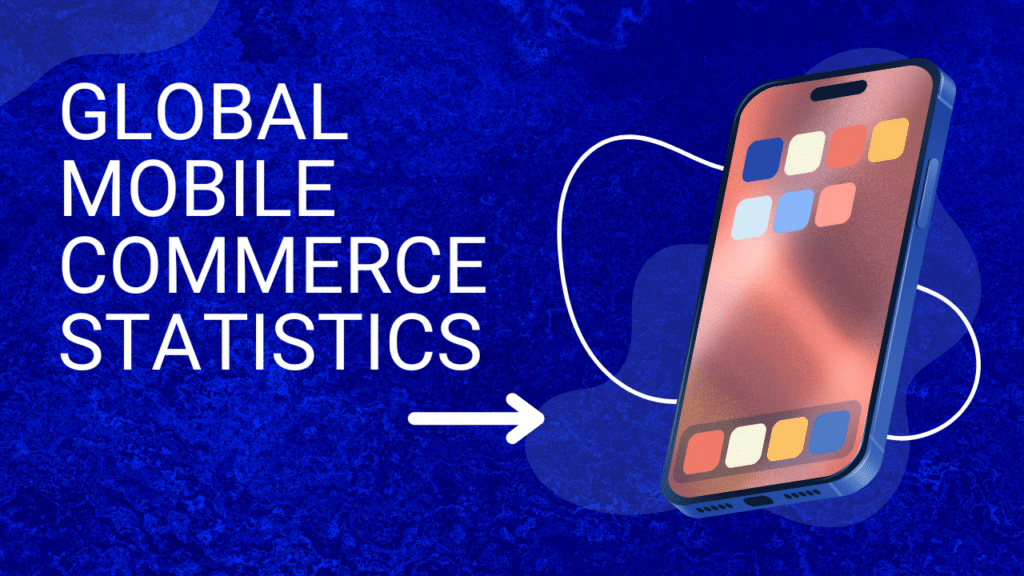A single marketing campaign won’t excite everyone. What appeals to Gen Z won’t appeal to a boomer or millennial.
This is where demographic segmentation comes into play.
Demographic segmentation is a subset of marketing segmentation, and it allows you to isolate your target market into categories and create specific selling points for each.
This makes marketing campaigns laser-focused and targeted with high ROI.
In this article, I’ll define what demographic segmentation is, highlight the benefits, pros and cons, and share some real-world examples.
Let’s get started.
What Is Demographic Segmentation?
Demographic segmentation involves dividing a larger market into smaller segments based on various demographic factors. These factors include age, gender, income, education, marital status, occupation, and more.
By understanding different demographic groups’ unique characteristics and preferences, businesses can tailor their marketing efforts to reach and engage their target audience effectively.
In demographic segmentation, the focus shifts beyond just numbers and delves into the human aspects that shape consumer behavior.
This approach recognizes that people within the same demographic segment often share similar needs, desires, and purchasing patterns. By zooming in on these shared attributes, marketers can create more personalized and relevant campaigns, driving better results and fostering stronger connections with their audience.
Demographic segmentation serves as the cornerstone of targeted marketing strategies, allowing businesses to communicate with precision and resonance. It’s not just about understanding the demographics themselves but also about grasping the underlying motivations that guide consumer decisions.
This deeper insight enables marketers to craft messages, offers, and experiences that resonate authentically, leading to increased engagement, conversions, and overall success.
What Are The Benefits Of Demographic Segmentation?
1. Improved Personalization:
Demographic segmentation allows businesses to tune their approach finely. They can design products and services that perfectly align with the preferences of specific demographic groups.
This personal touch doesn’t stop at products – it extends to crafting marketing messages that resonate deeply on a personal level. By showing that the brand understands and values the unique needs of its customers, businesses can forge stronger relationships and foster customer loyalty.
2. Improved Product Relevance:
Understanding demographic nuances enables businesses to create products that cater precisely to the diverse requirements of various segments.
This means adapting features, designs, and functionalities to match the preferences of these groups. By doing so, customer satisfaction skyrockets as solutions directly address their preferences and lifestyles.
This tailored approach to product development solidifies a brand’s reputation as one that genuinely cares about its customers.
3. Improved Advertising Effectiveness:
The power of targeted marketing shines through in advertising. Demographic segmentation allows for the creation of advertisements that speak directly to the interests and concerns of specific audiences.
Businesses can ensure their messages hit the mark by selecting the right communication channels that resonate with these segments.
This laser-focused approach resonates better with the audience and maximizes the return on advertising investments by concentrating budgets on those more likely to convert.
See this example from Brooklyn and Barnes:

This ad is both age- and generation-targeted since many millennials in their 20s and 30s use the “Wife, mom, boss” phrase.
4. Enhanced Market Penetration:
Demographic segmentation opens doors to untapped opportunities. Businesses can tailor their offerings to attract new customer groups by identifying overlooked demographic segments.
This can be achieved by diversifying product lines and tweaking marketing approaches to suit the preferences of these previously untargeted audiences.
This leads to expanded market share and a broader customer base.
Pros Of Demographic Segmentation:
1. Better Understanding of Customer Needs:
Demographic segmentation empowers businesses to finely tune their offerings to align with the distinct requirements of various demographic groups.
Through methods like customer surveys and feedback analysis, marketers can gain profound insights into the unique preferences of each segment. By diligently analyzing data and trends in buying behavior across different demographics, businesses can stay ahead of changing market dynamics.
2. Higher Conversion Rates due to Personalized Marketing:
The power of personalization cannot be underestimated. Tailoring communication to resonate on an emotional level with customers significantly enhances engagement.
Purchasing decisions become more relevant and impactful with customized product recommendations based on demographic traits. This leads to higher conversion rates as customers feel a stronger connection to the products and services offered.
3. Efficient Allocation of Resources toward Specific Demographics:
Targeted marketing isn’t just efficient; it’s strategic. Businesses optimize resource allocation by focusing efforts on demographic groups more likely to convert.
Careful analysis of demographics aids in identifying the most effective communication channels and platforms.
Comparing the ROI of targeted campaigns to generic ones showcases the resource efficiency of this approach, guiding future marketing decisions.
4. Opportunity to Build Strong Emotional Connections with Customers:
Crafting compelling narratives that resonate with the values and aspirations of each demographic group fosters strong emotional connections.
By sharing success stories of brands that have effectively utilized demographic-focused strategies, businesses can inspire others to do the same.
Measuring customer loyalty and advocacy resulting from this emotional resonance solidifies the connection between brands and their customers.
Cons Of Demographic Segmentation
1. Oversimplification of Consumer Behavior:
While demographic data provides a foundation, it can sometimes oversimplify consumer behavior.
Instances arise where customers within the same demographic exhibit diverse behaviors due to individual preferences or changing circumstances. To mitigate this, combining demographic insights with psychographic and behavioral data is advisable for a more comprehensive understanding.
2. Risk of Reinforcing Stereotypes:
The danger of inadvertently perpetuating stereotypes exists in demographic marketing.
Companies have faced backlash for insensitive or stereotypical campaigns. To avoid this, creating culturally sensitive marketing materials while utilizing demographic data is crucial.
Pen manufacturers Bic has twice been called out for using lazy stereotypes to sell to women: first by producing a Bic for Her that was nothing more than a pink pen, and second with an International Women’s Day campaign that told women to “Look like a girl, act like a lady, think like a man, work like a boss.”
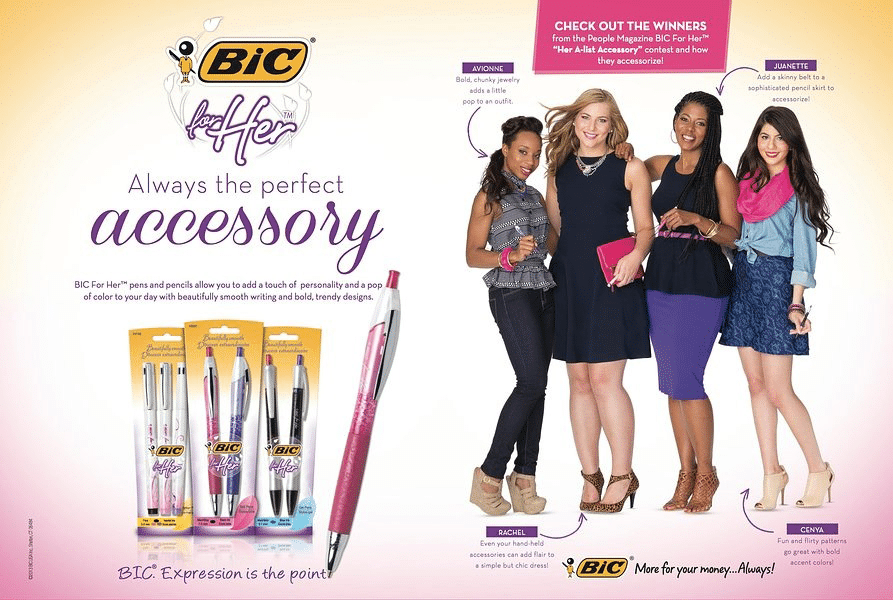
Brands that successfully celebrate diversity without resorting to stereotypes can serve as inspirations.
3. Potential to Overlook Individual Variations within a Segment:
Even within the same demographic segment, individual preferences can vary significantly.
Recognizing this and developing strategies that incorporate personalization beyond demographic traits is important.
Factors like past behavior and purchase history should be considered. Employing AI and machine learning allows for granular customer segmentation within demographics.
4. Possibility of Excluding Potential Customers:
There are scenarios where customers don’t neatly fit into predefined demographic categories.
Relying solely on demographic insights can inadvertently exclude potential customers. Hybrid approaches that blend demographic insights with behavioral data provide a more comprehensive view, ensuring a broader outreach.
Variables of Demographic Segmentation
1. Age:
Age is a pivotal demographic variable that shapes consumer behaviors and preferences.
Recognizing the diversity within different age groups is essential for successful marketing strategies. By understanding generational characteristics and behaviors, businesses can create targeted campaigns that resonate:
- Adapting marketing messages to align with the life stages and interests of specific age demographics ensures that the content feels relevant and relatable.
- Designing products tailored to the needs and preferences of different age brackets demonstrates an understanding of each generation’s unique challenges and desires.
See this example from Saga Holidays (they sell travel packages to folks over 50 years)
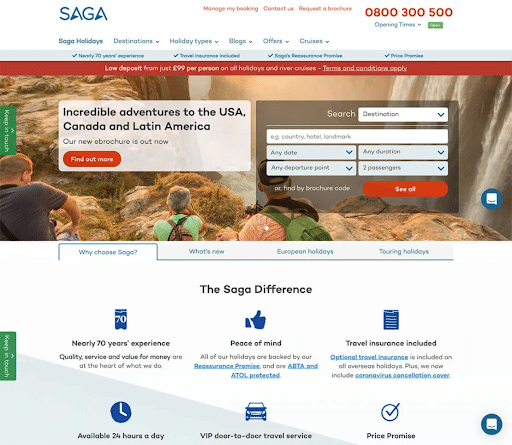
2. Gender:
Gender segmentation acknowledges that individuals may have distinct preferences based on their gender identity. Building inclusive marketing strategies that appeal to all genders is key:
- Developing products that cater to specific gender preferences showcases a brand’s commitment to addressing diverse needs.
- Creating advertising campaigns that respect gender identities helps in establishing emotional connections with the audience.
- While crafting gender-targeted marketing, it’s crucial to avoid perpetuating stereotypes and celebrate individual identities’ richness.
See this example from War Paint For Men – from the name of the brand to the imagery used, the demographic and target audience is clear.

3. Income/Occupation:
Income and occupation significantly influence purchasing decisions and lifestyle choices. Effective utilization of this variable involves understanding economic disparities and aspirations:
- Offering products at appropriate price points aligns with the financial capabilities of different segments, enhancing accessibility.
- Tailoring marketing approaches to address the unique needs and aspirations associated with various income and occupation groups enhances relevance.
- Designing products for both luxury and budget preferences allows a brand to cater to a broader range of consumers.
Luxury wine brand NYETIMBER uses a formal and mature tone to reach out to its audience, which covers the rich and affluent.
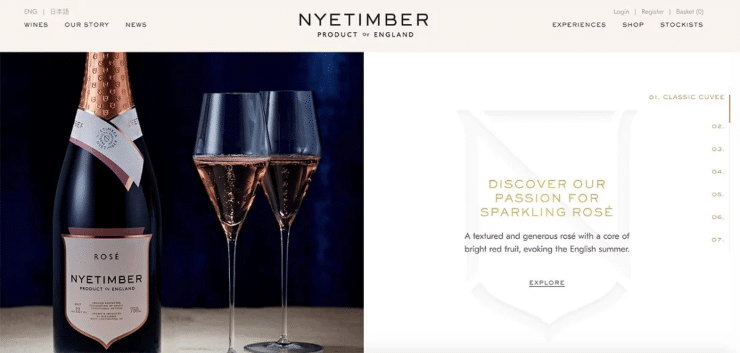
4. Family Structure:
Family dynamics play a pivotal role in consumer behavior, affecting the decision-making process. To effectively incorporate this variable:
- Crafting messaging that resonates with the experiences of different family arrangements demonstrates empathy and understanding.
- Developing products that cater to the varying needs of families, singles, parents, and couples showcases a brand’s commitment to catering to diverse lifestyles.
- Creating loyalty programs or incentives tailored to specific family structures can strengthen customer relationships and foster loyalty.
5. Ethnicity and Religion:
Cultural and religious affiliations influence consumer behavior and shape preferences. Employing this variable responsibly involves respecting diversity and avoiding cultural insensitivity:
- Sensitively addressing cultural nuances and values in marketing materials demonstrates a brand’s commitment to inclusivity.
- Designing products that cater to the preferences and religious requirements of specific cultural or religious groups showcases cultural understanding and respect.
- Celebrating diversity without resorting to stereotypes showcases a brand’s dedication to fostering an inclusive environment.
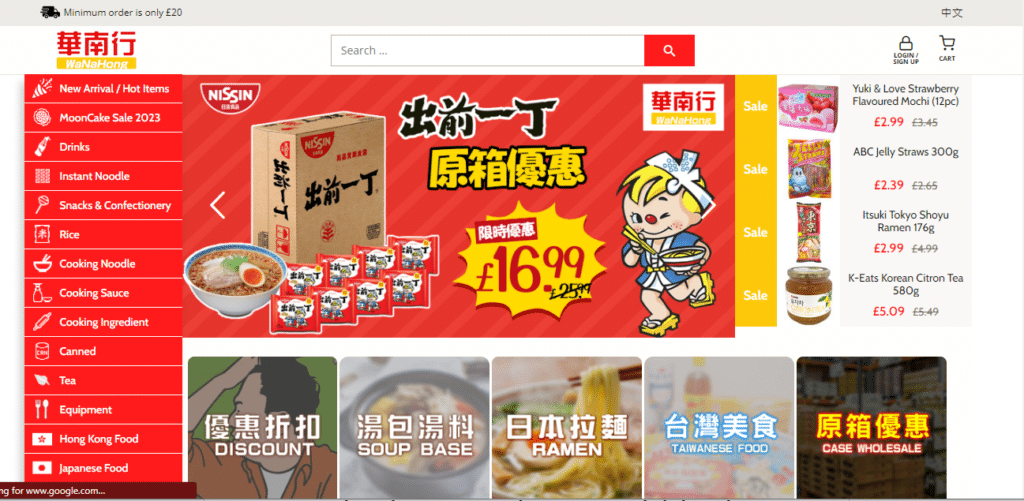
WaNaHong is an online Asian supermarket selling primarily to Asian expats living in the UK.
Their website features many familiar products from China, Japan, Taiwan, and other Asian nations and is also skewed heavily towards providing the best experience for their customers, with many headings and products described in both Chinese and English.
Real-World Examples of Demographic Segmentation
1. McDonald
The fast-food chain is known to change up its menu based on regional tastes, but that also impacts its ads, like in the example below from India.
Many people who practice Hinduism (the predominant religion in India) observe a vegetarian diet because of their religious reverence for cows. So, of course, McDonald’s adapted, even though they are a burger chain, by advertising their non-red-meat and vegetarian options.

2. Hermes

Looking at this ad, it’s easy to understand that it targets consumers with a keen eye on high fashion and a similar lifestyle to the one the image portrays/ aspirational folks.
Final Thoughts
Demographic segmentation enables brands to design marketing strategies that resonate with the demographic they’re targeting.
Demographic segmentation offers improved conversion rates, improved customer satisfaction, and personalization. Though it requires effort, the payoff is immense.

